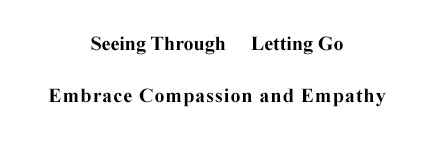In this post, we discuss another important role that Citta plays.
In his doctrine of the Two Truths, Buddha teaches that there are two kinds of truths.
Two Truths (Sanskrit=Satyadvaya; Chinese=二諦), according to The Princeton Dictionary of Buddhism, is “”the two truths,” viz. “ultimate truth” and “conventional truth.”” “The two truths are central terms in the Buddhist philosophy of categorizing the phenomena of the universe,” and “regardless of the school, the truths are presumed to be exhaustive, with everything that exists, that is, all dharmas, falling into one of the two categories.”
The definitions of the conventional and the Ultimate Truth are:
1) Samvrtisatya (Chinese=俗諦), according to The Princeton Dictionary of Buddhism, is “in Buddhist Sanskrit, “conventional truth,” or “relative truth.” It is “generally understood to refer to objects of ordinary experience that involve misperceptions tainted by ignorance, in distinction to the true or ultimate nature of those objects, which are the ultimate truths. It is important to note that conventional truths, although misperceived, nonetheless exist conventionally or have conventional utility.”
Conventional or relative truths apply to our universe. Indeed, if one looks up the definition of “truth” on dictionary.com, one finds that the noun “truth” is either circularly defined with its adjectives or with other synonyms. In other words, “truth” has no intrinsic meaning.
Whether something is the “truth” ultimately exists only in one’s mind. Secular “truths” are just expressions of opinions, and they can change over time and may not be universally accepted. Consequently, Buddha deems conventional truths relative. While what you think is true may be valid to you, others may not think so. Therefore, absolute truth, meaning truths that never change, does not exist on earth.
2) Ultimate Truth/Absolute truth/First Principle of Truth (Sanskrit=paramarthasatya; Chinese=真諦), according to The Princeton Dictionary on Buddhism, “a number of etymologies are provided in the commentarial literature, based on the literal meaning of paramarthasatya as “highest-object.” Thus an ultimate truth is a highest-object truth because it is the object of wisdom (prajna), the highest form of consciousness.”
Citta can be the Ultimate Truth for the same reason it can be the Ultimate Reality: its mentality never fluctuates. The truth it represents is always the same. Furthermore, Citta is the highest form of consciousness because it contains “all objects of knowledge,” the “experiential content” of nature, as well as the object of enlightenment.
To comprehend why Citta is the First Principle of Truth, one must first understand that, in Buddhism, “principle” has a similar meaning to “theory” in science.
Like the theoretical Theory of Everything in science “that fully explains and links together all aspects of the universe,” Citta can be the First Principle of Truth in Buddhism because it can fully explain Buddha’s teachings on the nature of reality because they all originate from Citta.
On the other hand, while the Theory of Everything is theoretical, the First Principle of Truth is a verifiable phenomenon that can serve as the fundamental ground truth in Buddhism from which all Buddha’s teachings sprout. Simply stated, all Buddha’s teachings, and, therefore, all phenomena in the universe, can be explained as either mentality fluctuating or not.
As the only education that has a verifiable fundamental ground truth makes Buddhism uniquely the only logically consistent, self-sufficient education that any enlightened person can directly verify.


